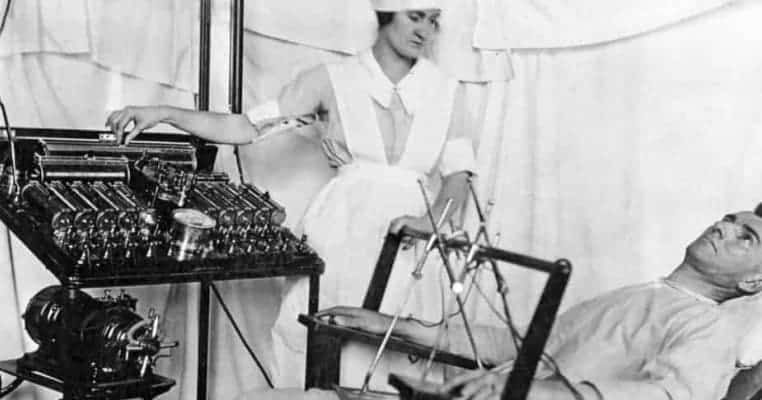As L.P Hartley poignantly noted: “the past is a foreign country; they do things differently there.” This sentiment is no truer than in relation to the practice of medicine, with the history of the noble profession rife with absurd and dangerous methods believed to have been beneficial for patients. Whilst some developments were reasonable, including the introduction of rudimentary surgical tools during the Greco-Roman era or even the use of urine for sterilization during the Middle Ages, some were merely ineffectual, such as the widespread use of benign patent medicines during the late 19th century, and others were just manifestly insane and caused far more harm than good.

Here are 16 such insane medical practices that doctors actually thought were good for you:

16. Hemorrhoids were traditionally treated in a number of unscientific ways, most unappealingly through the insertion of a red hot poker up the bottom
Hemorrhoids, also known as piles, are natural cushions that form as part of the human anal canal with the purpose of easing and maintaining rectal command; although innately benign, via a number of factors, including pregnancy, diarrhea, and constipation, hemorrhoids can become inflamed to cause considerable pain to the afflicted. First mentioned in 1700 BCE by the ancient Egyptians, the condition has endured across the centuries, through ancient Greece and Rome, Medieval Europe, to the modern day, with an estimated 50-66% of all adults destined to suffer from inflamed hemorrhoids at some point during their lives.
Most infamously, during the Middle Ages hemorrhoids were associated with Saint Fiacre – the Catholic patron saint of gardeners – who himself developed the condition during the 7th century. Believed to be a result of inadequate veneration of the canonized priest, the suggested medical treatment involved heating “seven or eight small pieces of iron” and inserting said scorching metals into the rectum until the hemorrhoids fell off “like a piece of burnt hide”. Incredibly, this practice continued as late as 1882, with William Allingham’s Fistula, Hemorrhoids, Painful Ulcer, Stricture, Prolapsus, And Other Diseases Of The Rectum recommending this absurd and archaic approach as the preferred mode of treating inflamed hemorrhoids; even more bizarrely considering his personal endorsement, Allingham notes that the results tended to be unsuccessful, ranging from “great pain” and “retarded recovery” to potentially fatal “abscesses”.

